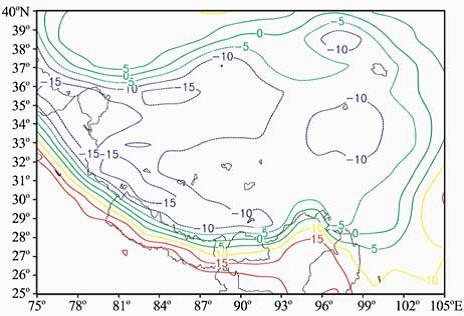Scientists verified the Surface Air Temperature and Precipitation from CMIP5 Model in Northern Hemisphere and Qinghai-Xizang Plateau
Updatetime:2013-09-29From:
【Enlarge】【Reduce】
Climate model is a powerful tool for climate change. For future climate change assessment and forecast, climate model is the necessary technique to be assist. CMIP program has been performed to CMIP5 stage, and has been provided the longest and the most extensive database for climate change. This provides the unsubstantiated scientific basis for forecast the future climate change. Before detailed analysis of the simulation results, it is necessary to use the observational data to assess the simulation results, and the relatively good results are chose for analysis. This is benefit for simulation of the credibility and model development and improvement.
The scientific research personnel from CAREERI used the observations data of Northern Hemisphere and Qinghai-Xizang Plateau by trend analysis, value comparison, wavelet analysis, and then simulation results by 8 models were compared. The results show that all models have well simulated at temperature changes in the Northern Hemisphere region. In general, the highest temperature is in July and August, the lowest temperature is in January, and there is no phase problem. All the modes have the consistent results in the interannual and interdecadal changes, but the maximum temperature difference can reach of 2.8℃. About the average annual temperature from 1850 to 2005, the difference between maximum and minimum simulation results can up to 1.8℃. Besides one model, others can accurately simulate temperature break at least once. About the precipitation simulation in the Northern Hemisphere region, each model can simulate the seasonal changes in precipitation, but the trend show that four models simulate the increasing precipitation and whereas four modes simulate the reduced trend. About the temperature simulation in Qinghai-Xizang Plateau, besides two models have passed the test of confident level of 95%, others have passed the test of confident level of 99%. Each model can simulate the precipitation center of the Qinghai-Xizang Plateau, but precipitation values for each simulation model are quite different. After the comparative analysis, two models are selected for the follow-up study.

The spatical distribution of annual mean surface air temperature in QXP simulated from CNRM-CM5 model
Appendix




